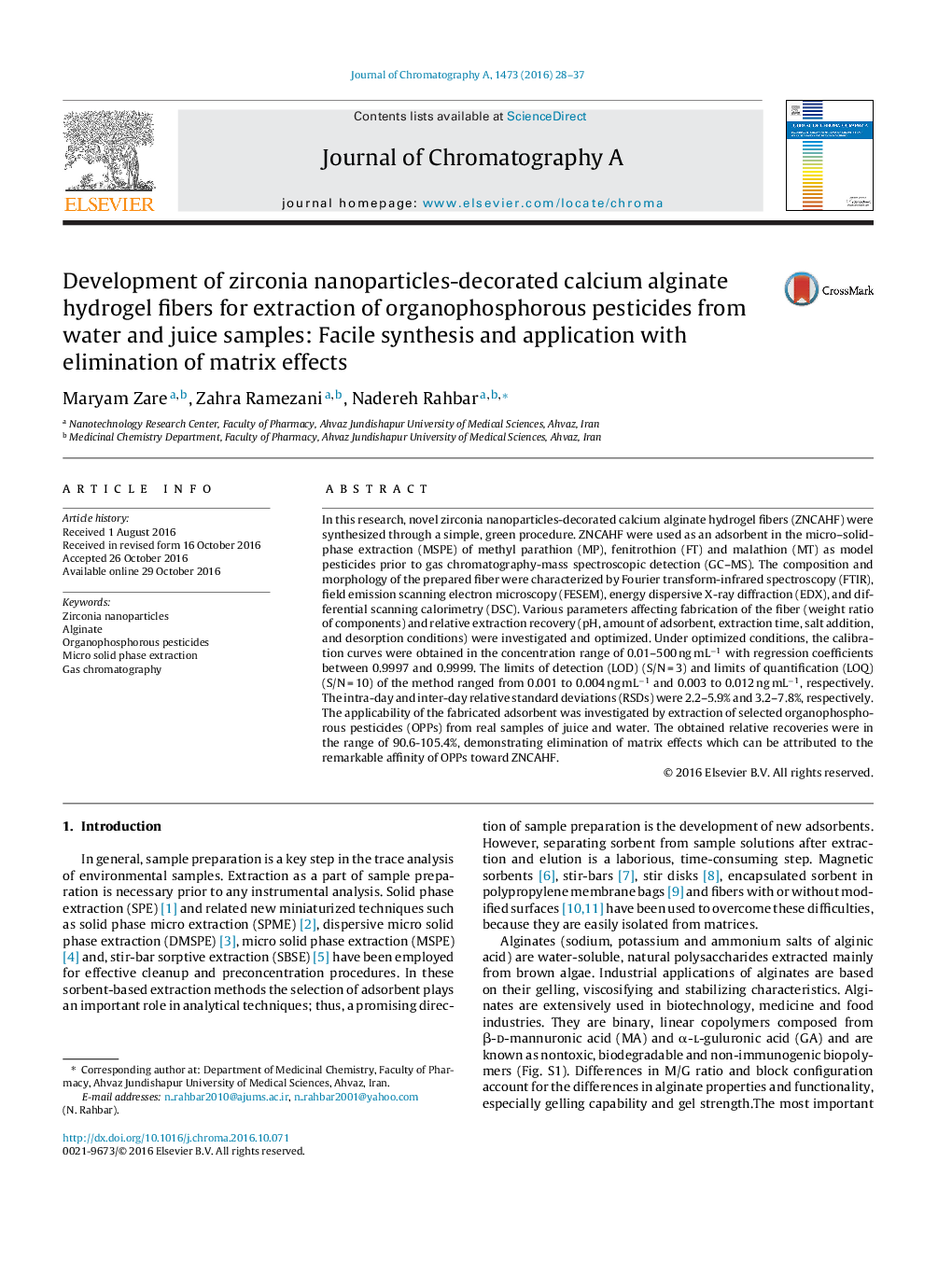| Article ID | Journal | Published Year | Pages | File Type |
|---|---|---|---|---|
| 5135436 | Journal of Chromatography A | 2016 | 10 Pages |
â¢A simple and cost effective method is used for the preparation of ZNCAHF as a new adsorbent.â¢ZNCAHF is introduced as an environmental friendly and excellent adsorbent to organophosphorous pesticides.â¢With the aid of ZNCAHF the MSPE procedure carried out without limitation due to the isolation of adsorbent from sample solution and desorption solvent.â¢Ease of separation from solution and having high specific area due to its thin fibrous shape and ZNP content are two essential features of the synthesized fiber.â¢The proposed method possesses a wide dynamic range, low LODs, short extraction time.
In this research, novel zirconia nanoparticles-decorated calcium alginate hydrogel fibers (ZNCAHF) were synthesized through a simple, green procedure. ZNCAHF were used as an adsorbent in the micro-solid-phase extraction (MSPE) of methyl parathion (MP), fenitrothion (FT) and malathion (MT) as model pesticides prior to gas chromatography-mass spectroscopic detection (GC-MS). The composition and morphology of the prepared fiber were characterized by Fourier transform-infrared spectroscopy (FTIR), field emission scanning electron microscopy (FESEM), energy dispersive X-ray diffraction (EDX), and differential scanning calorimetry (DSC). Various parameters affecting fabrication of the fiber (weight ratio of components) and relative extraction recovery (pH, amount of adsorbent, extraction time, salt addition, and desorption conditions) were investigated and optimized. Under optimized conditions, the calibration curves were obtained in the concentration range of 0.01-500 ng mLâ1 with regression coefficients between 0.9997 and 0.9999. The limits of detection (LOD) (S/N = 3) and limits of quantification (LOQ) (S/N = 10) of the method ranged from 0.001 to 0.004 ng mLâ1 and 0.003 to 0.012 ng mLâ1, respectively. The intra-day and inter-day relative standard deviations (RSDs) were 2.2-5.9% and 3.2-7.8%, respectively. The applicability of the fabricated adsorbent was investigated by extraction of selected organophosphorous pesticides (OPPs) from real samples of juice and water. The obtained relative recoveries were in the range of 90.6-105.4%, demonstrating elimination of matrix effects which can be attributed to the remarkable affinity of OPPs toward ZNCAHF.
